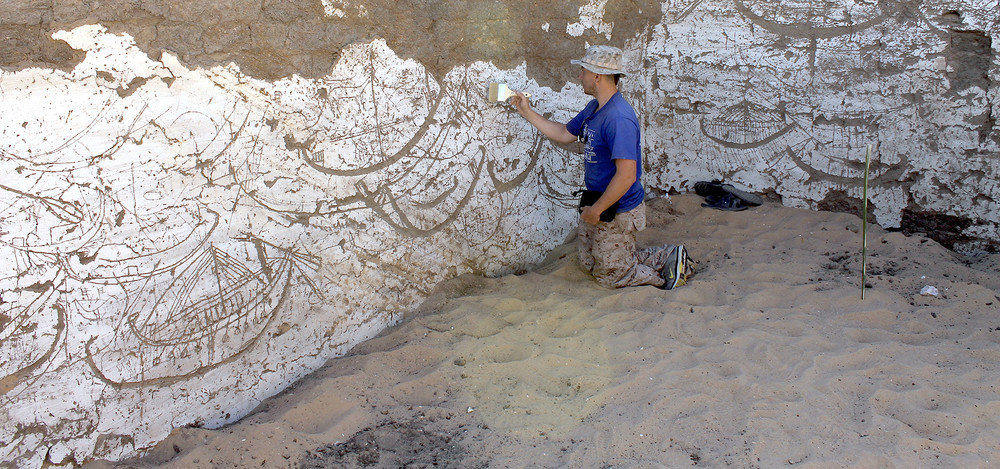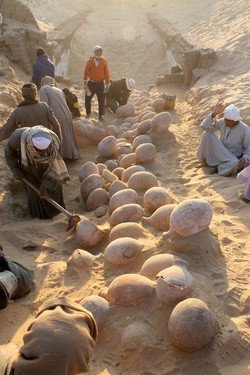
"Originally, the building must have had hundreds and hundreds of boat drawings," Wegner says. "They are phenomenal images, with a lot of detail showing the structure of the boats, the form of the hulls, masted and unmasted boats, rowers, oars."

Senwosret III constructed multiple tomb sites before his death, leading to the possibility that he was buried either in a pyramid he built in northern Egypt or in his Abydos tomb. Uncovering a royal boat burial like the one Wegner's team found suggests the tomb was the king's resting place.
"Senwosret III's tomb at Abydos is one of the largest of its type in Egypt. It's about 800 feet long, cut into the bedrock, lined with massive masonry blocks," Wegner says. "A lot of evidence has come out that this was the king's burial place, and the boat burial strengthens the case."
Wegner says including a boat at a king's final resting spot is a long-held tradition that ended not long after Senwosret III's reign, though researchers don't fully understand why. He's hoping continued work at Abydos, including the excavation of nearby chambers that likely held other ceremonial equipment, can provide at least some additional context. He plans to return to the site with several Penn graduate students and Penn Museum specialists in 2017.
"Archaeology often involves piecing together tiny fragments of information. We may get some interesting clues from these wood fragments about the size and design of the boat itself," Wegner explains. "I'd like to reopen the building and systematically excavate all of that to the lowest levels ... to get a sense of the vessel's scale."



Reader Comments
to our Newsletter